A quick look at the examples of kitchen lighting seus lighting collection presented by the website show pendant lights, light sconces and mini chandeliers. Several pieces are in fact being offered at discounted prices, which homeowners could consider when looking to upgrade their lighting fixtures. Even expecting mothers will be inspired to use such lights in illuminating a newborn’s nursery room.
Making a Nursery Room Whimsical by Adding Ambient Lighting
 Modern nursery room ideas are whimsical, and aim to put a baby in a good sleeping mood. That’s why it’s no longer surprising to see pendant lights or a mini chandelier lighting up a baby’s room. The modern styles are ideal for incorporating ambient lighting in a room as they can have a positive effect on a baby’s disposition while inside the nursery.
Modern nursery room ideas are whimsical, and aim to put a baby in a good sleeping mood. That’s why it’s no longer surprising to see pendant lights or a mini chandelier lighting up a baby’s room. The modern styles are ideal for incorporating ambient lighting in a room as they can have a positive effect on a baby’s disposition while inside the nursery.
Ambient lighting can also be provided by versatile luminaires like recessed spotlights, mounted sconces and ceiling lights that make use of different colors. Illumination can come in varying levels of brightness and temperatures when creating ambient lighting across a space.
It would be fun for a baby boy or girl to see little spots of dancing lights shimmering across the ceilings coming from pendant lights or mini chandeliers. Many have observed that lights and movements are natural attractions for babies.
Consider a Layered-Lighting Style for a Nursery Room
 A smaller lighting fixture is also important, usually a night light on the bedside table. Parents need to have an excellent lighting fixture that they can use for bedtime reading or in carrying on with middle-of-the-night activities like feeding the baby or changing diapers.
A smaller lighting fixture is also important, usually a night light on the bedside table. Parents need to have an excellent lighting fixture that they can use for bedtime reading or in carrying on with middle-of-the-night activities like feeding the baby or changing diapers.
Having both ambient lighting and smaller nightlights is a great way of having layered lighting effects in the nursery
The Sonya Modern Crystal Pendant Light
Have a closer look at the Sonya Modern Crystal Pendant Light included in the array of Seus Lighting collection. This pendant lighting style has crystals, shaped like water drops that shimmer. Its cylindrical lampshade design creates a 360-degree lighting effect that can cover every corner of a modest-sized room. The pendant light can be adjusted at hanging heights ranging from 11.4 inches to 68.4 inches, depending on the size of the room.
The adjustable height feature is important if this pendant light is for the nursery. While babies have very limited eyesight during the first several months, the lights can stimulate the baby’s brain as it continues to develop.
The lights projected by the Sonya crystal pendant light dance and project a symphony of uniform reflections that does not dazzle and instead, promote a positive and relaxing mood.

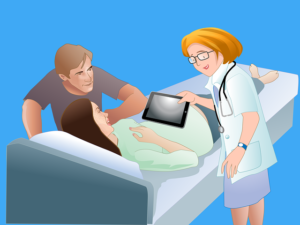 However if in such cases, a female worker who has been using a power drill while pregnant would have had increased levels of stress that can affect a baby’s development. Wearing ear plugs protects only the mother’s auditory system but not the baby’s. Health experts explain that noise produces sound waves that travel through the body.
However if in such cases, a female worker who has been using a power drill while pregnant would have had increased levels of stress that can affect a baby’s development. Wearing ear plugs protects only the mother’s auditory system but not the baby’s. Health experts explain that noise produces sound waves that travel through the body.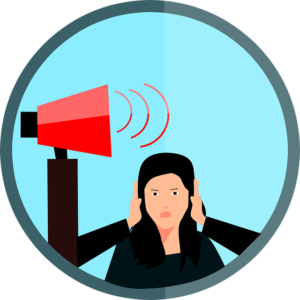 The only way a pregnant worker can protect her baby against the damaging effect of noises is to stay away and out of places filled with loud sounds. Speak to the supervisor about the need to transfer to a department with a less noisy environment. Cite the medical concerns over the hazardous effects of noise on pregnancy. Examples of workplaces where noise pollution is at incredibly high levels include the following:
The only way a pregnant worker can protect her baby against the damaging effect of noises is to stay away and out of places filled with loud sounds. Speak to the supervisor about the need to transfer to a department with a less noisy environment. Cite the medical concerns over the hazardous effects of noise on pregnancy. Examples of workplaces where noise pollution is at incredibly high levels include the following: This post delves on Australian maternity hospitals, and of what Aussies think of the care and services they provide. Private maternity facilities in Australia are very similar to those in other countries. However, know beforehand that women who choose to give birth in a private medical facility are those with private health insurance. Otherwise, it’s quite expensive to seek maternity health care and child birth services in a private Aussie hospital.
This post delves on Australian maternity hospitals, and of what Aussies think of the care and services they provide. Private maternity facilities in Australia are very similar to those in other countries. However, know beforehand that women who choose to give birth in a private medical facility are those with private health insurance. Otherwise, it’s quite expensive to seek maternity health care and child birth services in a private Aussie hospital.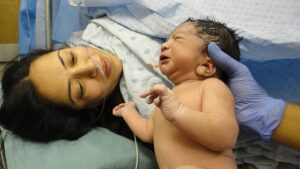 In Australia, most women prefer to have their prenatal sessions and child delivery in the labour ward or birthing centre of a public hospital. Mainly because the costs are largely covered by Medicare and therefore substantially free. However, unlike in private hospitals, pregnant patients with complications cannot choose to have their own doctor in a public hospital. Prenatal care and child delivery services for low-risk pregnancies are usually provided by whichever team of midwives are available.
In Australia, most women prefer to have their prenatal sessions and child delivery in the labour ward or birthing centre of a public hospital. Mainly because the costs are largely covered by Medicare and therefore substantially free. However, unlike in private hospitals, pregnant patients with complications cannot choose to have their own doctor in a public hospital. Prenatal care and child delivery services for low-risk pregnancies are usually provided by whichever team of midwives are available.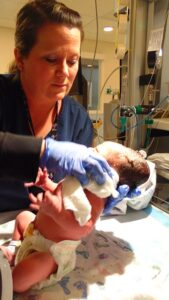 The safety and quality of hospitals in Australia are ensured by numerous regulatory mechanisms and systems that oversee not only the quality of the hospital services. The regulations include measures surrounding medicines, medical devices, the hospital workforce and the integrity of the structure. In Australia, concrete footings and slabs must follow the slab thickness set under the Australian standards. The thickness standards for hospitals are stated in the specification documents supporting the arrangements for the building of the hospital.
The safety and quality of hospitals in Australia are ensured by numerous regulatory mechanisms and systems that oversee not only the quality of the hospital services. The regulations include measures surrounding medicines, medical devices, the hospital workforce and the integrity of the structure. In Australia, concrete footings and slabs must follow the slab thickness set under the Australian standards. The thickness standards for hospitals are stated in the specification documents supporting the arrangements for the building of the hospital. Continue Reading
Continue Reading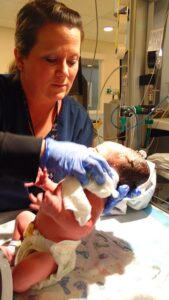 The Ministry of Health of the Kingdom of Saudi Arabia acknoŵledges that in-depth studies of maternity services is essential to effectively improve the health system. Apparently, ongoing privatization movements particularly in the maternity service sector, make such studies critical. Mainly because the results will reveal the factors affecting childbirth, the most basic service provided by healthcare facilities.
The Ministry of Health of the Kingdom of Saudi Arabia acknoŵledges that in-depth studies of maternity services is essential to effectively improve the health system. Apparently, ongoing privatization movements particularly in the maternity service sector, make such studies critical. Mainly because the results will reveal the factors affecting childbirth, the most basic service provided by healthcare facilities.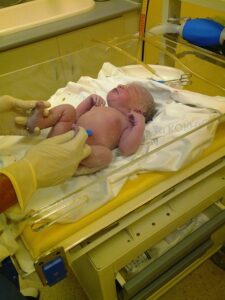 Another study, also by way of structured questionnaire, was conducted to determine the factors facilitating or preventing pregnant women from receiving prenatal checkups. Prenatal or antenatal care is essential because pregnant women can receive proper micronutrient supplementation and treatments for health problems commonly associated with pregnancy. In Saudi Arabia, antenatal care includes anti-tetanus immunization and HIV testing.
Another study, also by way of structured questionnaire, was conducted to determine the factors facilitating or preventing pregnant women from receiving prenatal checkups. Prenatal or antenatal care is essential because pregnant women can receive proper micronutrient supplementation and treatments for health problems commonly associated with pregnancy. In Saudi Arabia, antenatal care includes anti-tetanus immunization and HIV testing. The hospital-based study revealed that the most common personal barriers preventing pregnant women from receiving antenatal care is lack of transportation and fear of medical examinations. Other factors are deemed as structural barriers such as inconvenient clinic hours and dissatisfaction with previous prenatal care. An important measure recommended in removing these antenatal barriers is to maintain effective communication between pregnant patients and hospital staff.
The hospital-based study revealed that the most common personal barriers preventing pregnant women from receiving antenatal care is lack of transportation and fear of medical examinations. Other factors are deemed as structural barriers such as inconvenient clinic hours and dissatisfaction with previous prenatal care. An important measure recommended in removing these antenatal barriers is to maintain effective communication between pregnant patients and hospital staff. More often than not, women who find out they’re pregnant become increasingly concerned over keeping themselves and their child healthy and safe from toxins. After all, the environment has gone through changes and advancement through the years, where harmful chemicals and toxic elements came to affect the air, water and even the food we normally take in as sustenance. The most challenging part in addressing such concerns are the hidden toxic elements. Nevertheless, they are not without solutions albeit requiring professional help of service providers.
More often than not, women who find out they’re pregnant become increasingly concerned over keeping themselves and their child healthy and safe from toxins. After all, the environment has gone through changes and advancement through the years, where harmful chemicals and toxic elements came to affect the air, water and even the food we normally take in as sustenance. The most challenging part in addressing such concerns are the hidden toxic elements. Nevertheless, they are not without solutions albeit requiring professional help of service providers. If you are currently living in a home that was built in the 70s or earlier, it would be wise to have a professional check if the plumbing, heating and electrical systems of the house have been replaced with modern components. Many California homes built and sold during the real estate boom in the 1970s and earlier, made use of materials that were later discovered to have high levels of toxicity such as lead, asbestos and VOCs.
If you are currently living in a home that was built in the 70s or earlier, it would be wise to have a professional check if the plumbing, heating and electrical systems of the house have been replaced with modern components. Many California homes built and sold during the real estate boom in the 1970s and earlier, made use of materials that were later discovered to have high levels of toxicity such as lead, asbestos and VOCs.